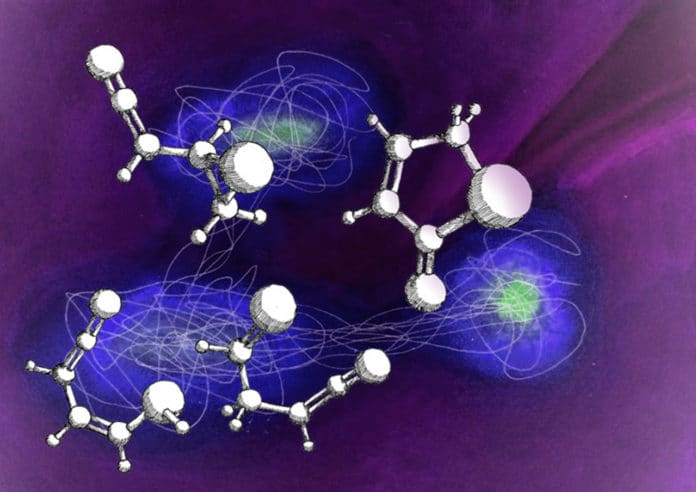Photoinduced isomerization reactions lie at the heart of many chemical processes in nature. The mechanisms of such reactions are determined by a delicate interplay of coupled electronic and nuclear dynamics occurring on the femtosecond scale, followed by the slower redistribution of energy into different vibrational degrees of freedom.
By applying time-resolved photoelectron spectroscopy with a seeded extreme ultraviolet free-electron laser, scientists from the Kansas State University have traced he ultrafast ring-opening of gas-phase thiophenone molecules following ultraviolet photoexcitation. What’s more, they also took extremely fast snapshots of light-induced molecular ring-opening reactions — similar to those that help a human body produce vitamin D from sunlight.
Daniel Rolles, associate professor of physics and the study’s principal investigator, said, “Think of this as stop-motion like a cartoon. For each molecule, you start the reaction with a laser pulse,
take snapshots of what it looks like as time passes, and then put them together. This creates a ‘molecular movie’ that shows how the electronic structure of the molecule changes as a function of how much time passes between when we start and when we stop.”
Shashank Pathak, a doctoral student and lead author on the paper, said, “the idea was to study the dynamics of how a ring opens in a molecule on the time scale of femtosecond, which is one quadrillionth of a second. The researchers use a free-electron laser to visualize how these reactions happen by recording electron energy spectra as the atoms in the molecule move apart.”
“The ring-opening reaction is observed in nature quite a bit. One example is the formation of vitamin D3 in our skin. When sunlight shines on our skin, we have big compounds that have these small ring structures that help with the absorption of UV light. The ring opens to form the precursor to vitamin D3 formation.”
“Making vitamin D involves various biological functions and this ring-opening is just one small — very small — part of the process. This research was able to record the changes in the molecule to the speed of the process, how it happens, and compare, the process to previously accepted theory.”
Journal Reference
- Pathak, S., Ibele, L.M., Boll, R. et al. Tracking the ultraviolet-induced photochemistry of thiophenone during and after ultrafast ring opening. Nat. Chem. (2020). DOI: 10.1038/s41557-020-0507-3
